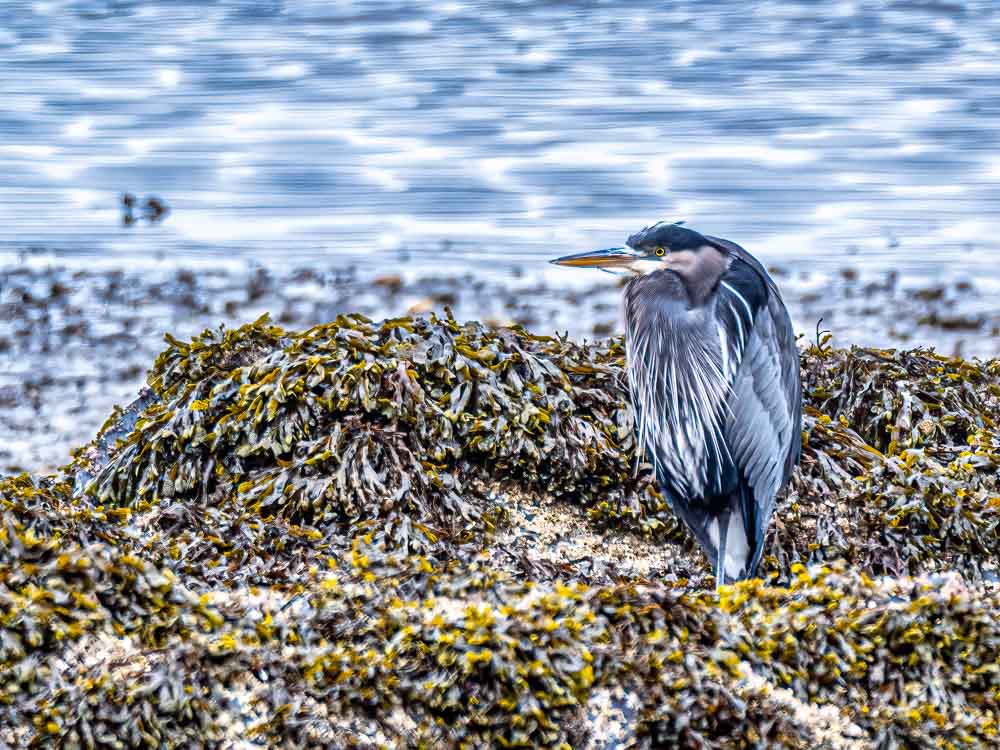
Bonnie Demerjian has a deep appreciation for birds that can be seen by the blue heron dangle earrings she sometimes wears. She’s been involved with the Stikine River Birding Festival for around 12 years. This year, she will host two events, beginning on April 24. The first an intro level birding identification class and the second will be a bird walk at Muskeg Meadows Golf Course.
She said the festival targets the Wrangell community itself, where workshops and entertainment bring people in, like a bird house building class. The festival initially attracted people from out of town to see the bald eagles congregate on the Stikine River though. It then morphed over time.
“Partly I think (it morphed), because you can’t always tell exactly when that’s going to happen,” Demerjian said. “It’s hard to plan a festival when you have birds aren’t on schedule. So it it kind of changes something a little broader.”
The festival helps people link the importance of habitat and bird population health.
“I’m kind of excited because today I heard and saw the first sandhill cranes,” Demerjian said. “They always come right about mid April and they usually come in the hundreds, thousands even. So they’re coming from down south. They go and they land on the delta of the Stikine River as a stopover for them.”
Sandhill cranes are one migratory bird that indicates spring in Southeast Alaska. Other birds that migrate here include warblers and thrushes. Demerjian said they haven’t arrived yet. We’ll have to wait another month for when it’s a bit warmer.
One of the earliest migratory birds is the Ruby-crowned Kinglet. Demerjian said they spend their winter as far south as Mexico and migrate north to breed.
“So they are here breeding through July, August,” she said. “We think of them as our birds but they actually don’t spend most of their life here. They spend it down south somewhere.”
Demerjian said one of the challenges of birding is learning their songs. She said that she’s always aware of bird sounds because sometimes birds in Wrangell are easier to hear than see.
“The Ruby-crowned Kinglet I was telling you about,” she said. “One of the things, they have a very repetitive sound. So it sounds like they’re saying ‘again and again and again and again.’ And once you hear it, I mean, it’s so distinctive that it’s one of those that you can learn easily.”
As Demerjian played the Ruby-crowned Kinglet bird song from an app on her phone, she said that they are very tiny birds around four inches long and the males have a ruby crown.
Birding isn’t always just about the birds. Sometimes birders witness unexpected acts of nature, like what Demerjian experienced at Petroglyph Beach.
“There was a blue heron that was about to come in and land on that rocky area with a marker on it,” she said. “A sea lion jumped up out of the water. Did not but tried to grab that heron right out of the air. It’s like ‘oh, what did we just see?'”
This Claire Froehlich and Matt Henson’s first year to organize the Stikine River Birding Festival.
Henson, the Marketing and Community Development Coordinator for the City and Borough of Wrangell, said that this area of central Southeast Alaska is a hub for migratory birds. The Audubon Society has an interactive map that shows where the birds are coming from.
“It’s almost like a funnel or a bottleneck for a lot of migratory birds,” Henson said.
He and Froehlich said this year they’re not bringing in as many speakers as in previous years because they’re focusing on more community involvement, but there are a lot of family-friendly community events.
There will also be a bird banding event and an art exhibition from Evergreen Elementary students. Many events will be held at the Nolan Center, including a ballet.
Another community activity that preps everyone for Bird Fest is “Name that Tweet.” Each morning on air, KSTK plays a bird song and people can call in and identify the bird to win prizes.
Claire Froehlich, a Park Ranger with the U. S. Forest Service, said their agency just put in a Motus Tower up the Stikine River to track birds. Motus is Latin for movement. The tower uses small radio transmitters, known as radio telemetry, to track tagged wildlife on the same frequency, such as birds, bats and insects.
“We’ve seen some really cool birds like a blue jay fly by the Motus tower in Wrangell, or near Wrangell, and fly all the way almost across Canada in like a day and a half,” she said. “And it’s a little bluebird.”
Though some migratory birds will carry on with their journey north, others might stay in the area and nest. Who knows, maybe they’ll even nest in one of the birdhouses people will make during the festival.
The Stikine River Birding Festival will be held from Wednesday, April 24 to Sunday, April 28. You can find a link to the schedule on our website, KSTK.org, posted with this story.











